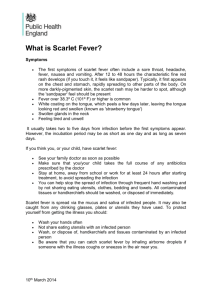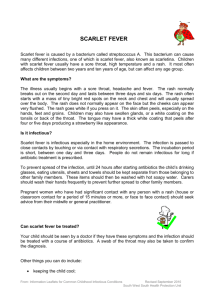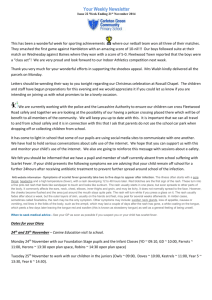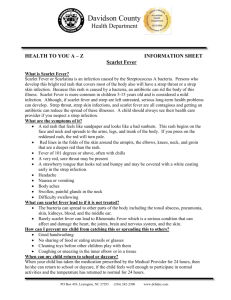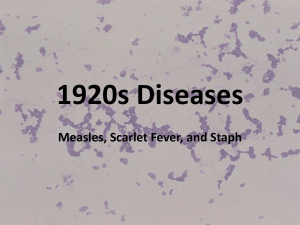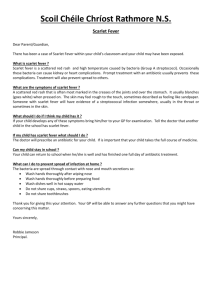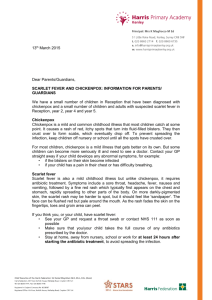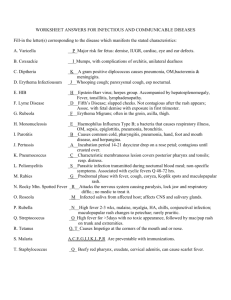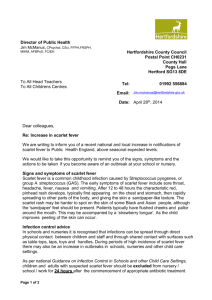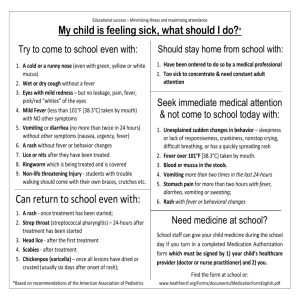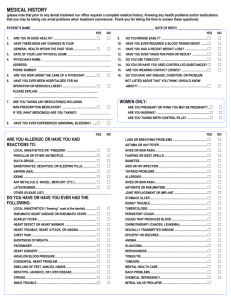Scarlet fever - St Philip`s Marsh Nursery School
advertisement
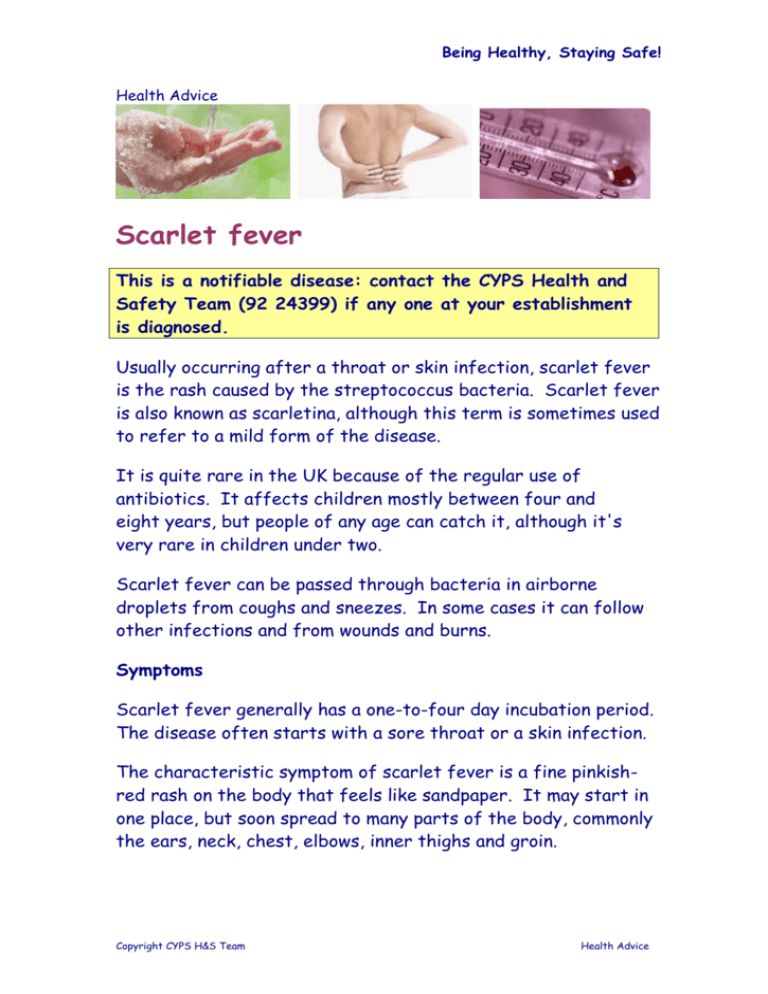
Being Healthy, Staying Safe! Health Advice Scarlet fever This is a notifiable disease: contact the CYPS Health and Safety Team (92 24399) if any one at your establishment is diagnosed. Usually occurring after a throat or skin infection, scarlet fever is the rash caused by the streptococcus bacteria. Scarlet fever is also known as scarletina, although this term is sometimes used to refer to a mild form of the disease. It is quite rare in the UK because of the regular use of antibiotics. It affects children mostly between four and eight years, but people of any age can catch it, although it's very rare in children under two. Scarlet fever can be passed through bacteria in airborne droplets from coughs and sneezes. In some cases it can follow other infections and from wounds and burns. Symptoms Scarlet fever generally has a one-to-four day incubation period. The disease often starts with a sore throat or a skin infection. The characteristic symptom of scarlet fever is a fine pinkishred rash on the body that feels like sandpaper. It may start in one place, but soon spread to many parts of the body, commonly the ears, neck, chest, elbows, inner thighs and groin. Copyright CYPS H&S Team Health Advice Being Healthy, Staying Safe! The rash does not normally spread to the face but the cheeks become flushed and the area just around the mouth stays pale. The rash will blanche (turn white) if you press a glass on it. The overall impression is that of someone with a flushed, red face is where scarlet fever gets its name. Other symptoms may include: headache, swollen neck glands, loss of appetite, nausea and/or vomiting, abdominal pain, pastia lines (broken blood vessels in the folds of the body eg armpit, causing red streaks), white coating on the tongue, which peels a few days later leaving the tongue looking red and swollen (known as strawberry tongue), and a general feeling of being unwell. The rash lasts for six days and then usually fades away. If symptoms aren’t treated, the outer layers of the skin may peel (particularly on the hands and feet) for up to six weeks after the original rash has faded. The rash is something to watch for in a child that has chicken pox as this may indicate a secondary infection. If this is the case, medical advice must be sought as the secondary infection may prolong the first infection or make it more severe. If a child has scarlet fever the parent/ carer should consult a GP. Exclusion Children (if well enough) can return to school 24 hours after commencing antibiotics. Copyright CYPS H&S Team Health Advice Being Healthy, Staying Safe! Any pregnant woman in contact with someone displaying any rash must be advised to contact their GP or Midwife. Further information: NHS Choices Health Protection Agency HS/JB Feb 08 Page revised July 09 (JB) (Updated Aug 10) (Updated Dec 10) (Updated Feb 11) Updated Aug 12 Copyright CYPS H&S Team Health Advice
